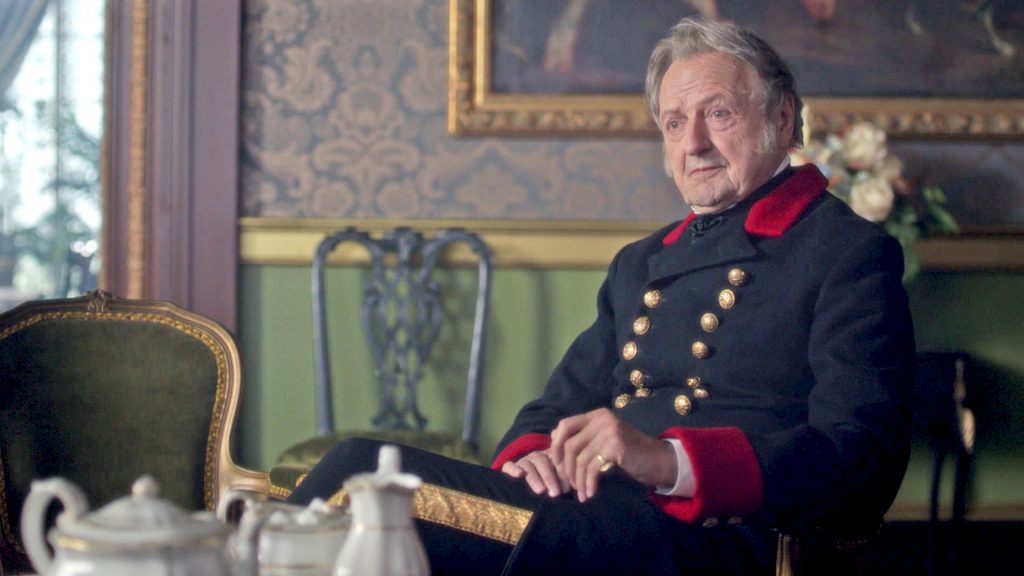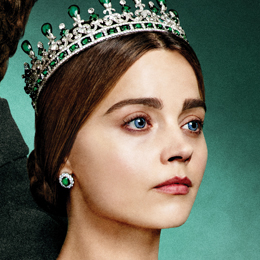Fact or Fiction: Inside Episode 7
From electroplating to the Exhibition, Victoria’s writer and creator Daisy Goodwin gives us insider access to the facts and fictions of Episode 7. Get the real story and the back story in our latest factcheck!
- 1.
Fact or Fiction: Albert was interested in electroforming & electroplating.


Fact: “Yes that’s true. Albert was the one who found all that stuff gripping. All that stuff—I mean, I couldn’t make that up!”
It was during Albert’s 1843 visit to the city of Birmingham, then the manufacturing heart of Britain, that he first witnessed the wondrous gilding/silvering process of electroforming and electroplating in George Elkington’s silver electroplating factory. Did Albert electroplate with, among other, his visionary partner in thinking big, Henry Cole? While there’s no direct evidence, many historians believe that Albert set up his own electroplating room in Buckingham Palace. Electroplating kits were readily available and moderately affordable.
- 2.
Fact or Fiction: There was media disdain for Exhibition.


Fact: “Yes, there was a huge amount of, ‘This is going to be a disaster…It’s basically foreign stuff…It’s never going to work…What are people thinking?’ Lots of people refused to come because they thought the glass roof would break if there was a hailstorm! In retrospect, it’s a bit like the same thing happened in Britain in the Olympics—you know, everyone thought the Olympics were going to be a disaster, an absolute shambles, and then it was this marvelous success.”
- 3.
Fact or Fiction: Victoria put Albert forward for Commander-in-Chief of the British Army.


Fact: “Yes, she did. I think the Duke of Wellington thought he would be good, and there was lots of debate about whether he should do it. He was very tempted to take the job, but then decided that actually it was more important that he did the exhibition.”
- 4.
Fact or Fiction: Victoria wanted Albert off the Exhibition project.


Fact: “Yes, because she was concerned. His health does begin to deteriorate from that point on.”
- 5.
Fact or Fiction: The Victoria Amazonica lily provided the inspiration for the Crystal Palace.


Fact: “Yes, that’s all true.”
The lily that gave us the Great Exhibition began its life in England in 1837 as bud and a leaf packed in brine and sent back from Guyana by explorer Robert Schomburgk, who couldn’t fit the giant bloom of the actual lily in his kayak. It was named Victoria regia for the new queen, and before long, a competition to grow the giant plant commenced. Among the competitors was Duke of Devonshire’s gardener at Chatsworth House, Joseph Paxton, who received a seedling that he cultivated into a flower which soon needed a much larger house in which to grow. Combining his knowledge of glass houses with engineering observed in the structure of the water lily’s leaves, he designed a glass house that served as the inspiration for the Crystal Palace.
Some 245 entries for the Exhibition hall design had been rejected when Paxton, with the encouragement of Henry Cole, submitted his proposal for the building, which was accepted by the commission in 1850…leaving less than a year to build the structure! Paxton prevailed, and the rest is history.
The Victoria regia was renamed the Victoria amazonica in 1901 after the queen’s death.




















